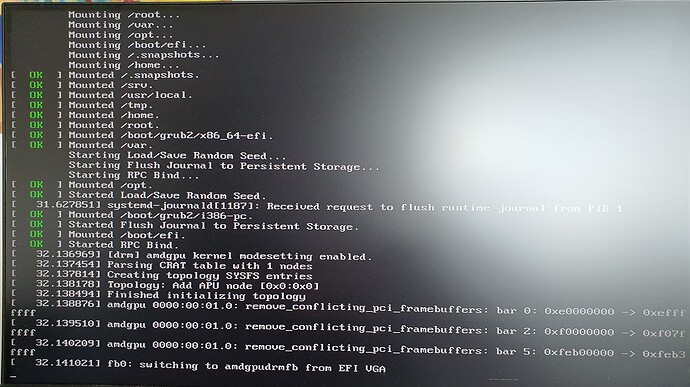switching to EFI boot from legacy, i now get to more meaningful messages in the boot sequence:
and there seem to be known issues with some kernels, then again this is an integrated GPU on the Opteron.
https://bugzilla.opensuse.org/show_bug.cgi?id=1168611
finally, booting with kernel parameter “nomodeset” worked.
